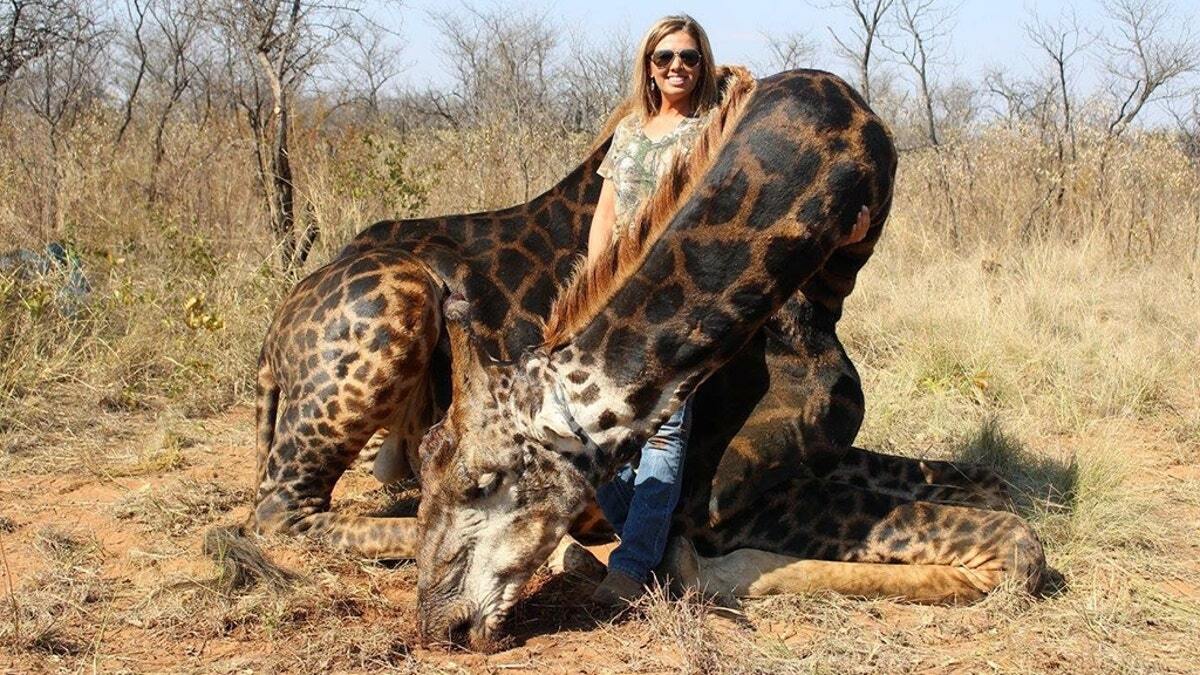
Did you know that black giraffes aren't a separate species but rather older giraffes whose spots have darkened with age? This fact often surprises many. Trophy hunting, especially of these majestic creatures, has sparked heated debates worldwide. Some argue it helps conservation efforts, while others see it as a cruel practice. Understanding the complexities behind this issue requires looking at various angles, from ecological impacts to ethical considerations. In this post, we'll explore 40 intriguing facts about black giraffe trophy hunting. Whether you're a wildlife enthusiast or just curious, these insights will shed light on a topic that's both controversial and fascinating.
Key Takeaways:
- Trophy hunting of black giraffes sparks heated debates globally. It's legal in some countries, with hunters justifying it for conservation and cultural reasons. Public outcry and ethical concerns continue to challenge this practice.
- The impact of trophy hunting on giraffe populations is significant. While some argue it supports conservation, others highlight population decline and ethical considerations. Balancing cultural traditions with animal welfare remains a complex issue.
Black Giraffe Trophy Hunting: An Overview
Black giraffes are not a separate species but rather older giraffes whose spots have darkened with age. Trophy hunting of these majestic creatures has sparked significant controversy. Here are some intriguing facts about black giraffe trophy hunting.
-
Not a Separate Species: Black giraffes are simply older giraffes whose spots have darkened over time.
-
Controversial Practice: Trophy hunting of black giraffes has ignited heated debates worldwide.
-
Legal in Some Countries: Countries like South Africa and Namibia permit giraffe hunting under strict regulations.
-
Expensive Permits: Hunting permits for giraffes can cost thousands of dollars, contributing to local economies.
-
Conservation Claims: Proponents argue that funds from hunting permits support conservation efforts.
-
Population Control: Some claim hunting helps manage giraffe populations and prevent overgrazing.
-
Cultural Significance: In some African cultures, hunting is a traditional practice with deep-rooted significance.
-
International Outcry: High-profile hunts often lead to global outrage and calls for stricter regulations.
-
Social Media Backlash: Photos of hunters with their trophies frequently go viral, sparking widespread condemnation.
-
Economic Impact: Trophy hunting can be a significant source of income for local communities.
The Hunters and Their Motivations
Understanding the motivations behind trophy hunting can shed light on this controversial practice. Here are some facts about the hunters and their reasons.
-
Status Symbol: For some, hunting a black giraffe is a status symbol and a mark of prestige.
-
Adventure and Challenge: Many hunters seek the thrill and challenge of hunting large, elusive animals.
-
Conservation Beliefs: Some hunters genuinely believe their actions contribute to conservation efforts.
-
Cultural Tradition: In certain cultures, hunting is a rite of passage or a way to honor ancestors.
-
Economic Contribution: Hunters often justify their actions by highlighting the economic benefits to local communities.
-
Personal Achievement: The sense of personal achievement and the trophy itself are significant motivators.
-
Exclusivity: The rarity and exclusivity of hunting a black giraffe add to its allure.
-
Philanthropy: Some hunters donate meat and other resources to local communities.
-
Wildlife Management: Hunters argue that their activities help manage wildlife populations.
-
Legacy: Leaving a legacy or being remembered for hunting a rare animal can be a powerful motivator.
Impact on Giraffe Populations
The impact of trophy hunting on giraffe populations is a critical aspect of the debate. Here are some key facts.
-
Population Decline: Giraffe populations have declined by nearly 40% over the past three decades.
-
Subspecies at Risk: Some giraffe subspecies are more vulnerable to hunting and habitat loss.
-
Conservation Efforts: Funds from hunting permits are sometimes used for giraffe conservation projects.
-
Selective Hunting: Regulations often require hunters to target older, non-breeding individuals.
-
Genetic Diversity: Removing older giraffes can impact the genetic diversity of populations.
-
Habitat Protection: Hunting revenues can support habitat protection and anti-poaching efforts.
-
Research Funding: Some hunting fees fund research on giraffe behavior and ecology.
-
Community Involvement: Local communities are often involved in conservation and management efforts.
-
Ecotourism: Alternatives like ecotourism can provide sustainable income without harming giraffe populations.
-
Policy Changes: Ongoing debates and research influence policy changes and hunting regulations.
Ethical and Moral Considerations
The ethical and moral implications of trophy hunting are complex and multifaceted. Here are some important considerations.
-
Animal Rights: Many argue that hunting sentient beings for sport is inherently unethical.
-
Cultural Sensitivity: Balancing respect for cultural traditions with animal welfare concerns is challenging.
-
Sustainable Practices: Ethical hunting practices emphasize sustainability and conservation.
-
Public Perception: Public opinion on trophy hunting is increasingly negative.
-
Legal vs. Ethical: Legal hunting practices may still be considered unethical by many.
-
Alternative Solutions: Promoting alternative conservation methods can reduce reliance on trophy hunting.
-
Transparency: Greater transparency in hunting practices and permit allocation is needed.
-
Education: Educating hunters and the public about conservation can foster more ethical practices.
-
Global Cooperation: International cooperation is essential for effective giraffe conservation.
-
Future Generations: Ensuring that future generations can appreciate giraffes in the wild is a shared responsibility.
Final Thoughts on Black Giraffe Trophy Hunting
Black giraffe trophy hunting stirs up strong opinions. Some argue it's a tool for conservation, providing funds for wildlife management and local communities. Others see it as a cruel practice that threatens already vulnerable species. Understanding both sides helps form a balanced view. Hunters claim their fees support conservation efforts, but critics question if the benefits truly outweigh the ethical concerns.
It's clear that more transparency and stricter regulations could help address these issues. Whether you support or oppose trophy hunting, staying informed and advocating for responsible practices is crucial. By doing so, we can ensure that wildlife conservation efforts are effective and ethical.
So, next time you hear about black giraffe trophy hunting, remember the complexities involved. It's not just about hunting; it's about finding a sustainable way to protect our planet's incredible biodiversity.
Frequently Asked Questions
Was this page helpful?
Our commitment to delivering trustworthy and engaging content is at the heart of what we do. Each fact on our site is contributed by real users like you, bringing a wealth of diverse insights and information. To ensure the highest standards of accuracy and reliability, our dedicated editors meticulously review each submission. This process guarantees that the facts we share are not only fascinating but also credible. Trust in our commitment to quality and authenticity as you explore and learn with us.


